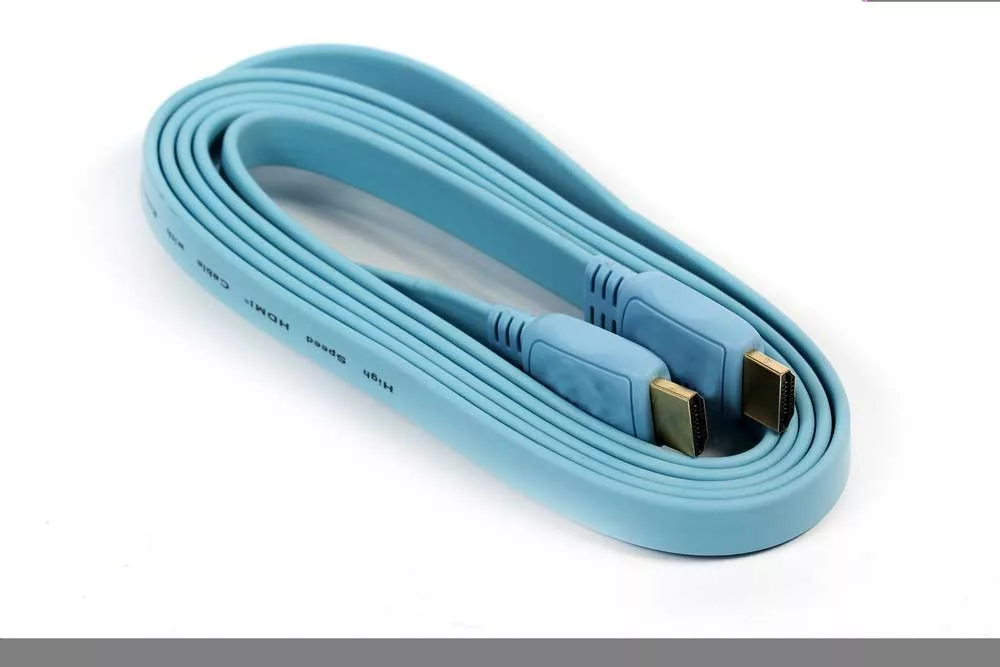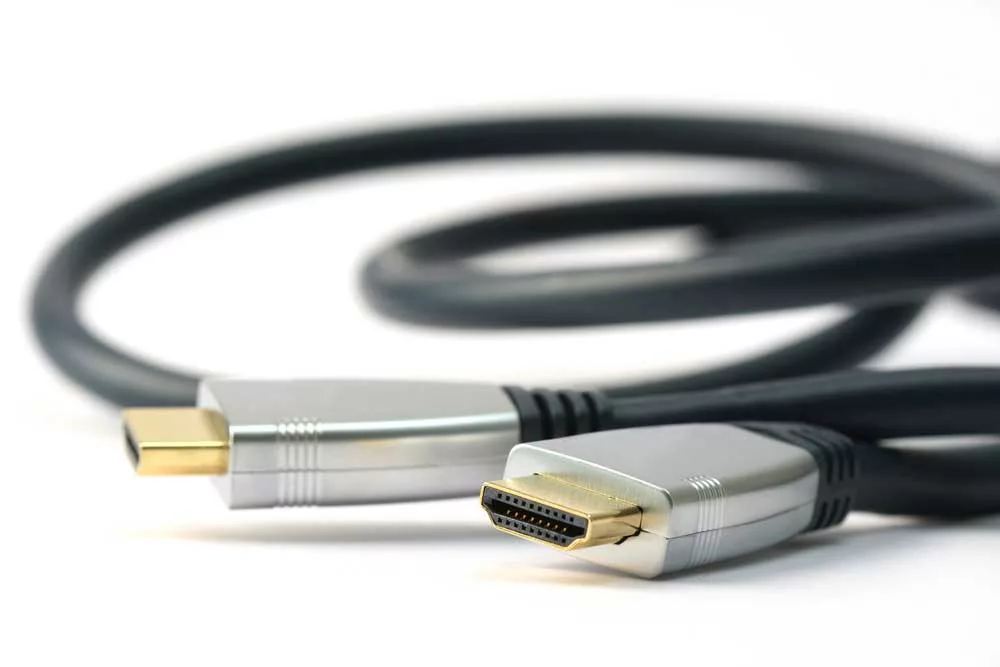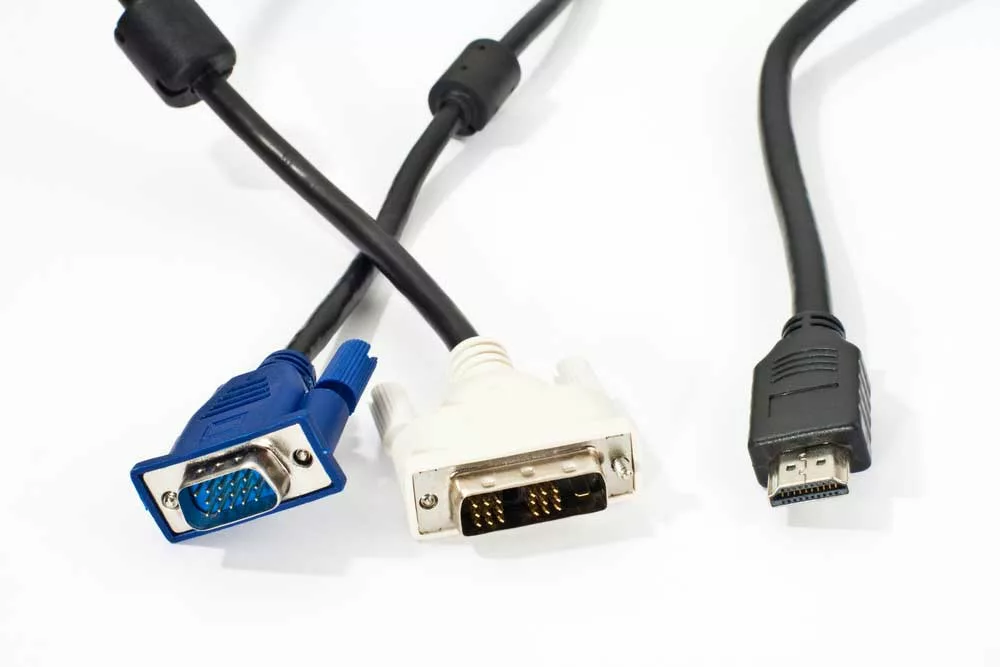HDMI cable end is mandatory to transfer digital HD audio and video files. You can find them in almost all residential, commercial, and educational settings.
The wide use of HDMI cables is because of the wide range of options available in this category. The cable remains the same; only the connector makes one HDMI cable different.
This article details different HDMI cable ends and their uses in varied applications.
Table of Contents
- HDMI cable end types:
- Do standard, Mini, and Micro HDMI connectors differ in functionality?
- Are there HDMI cables with different ends?
- Common problems while using HDMI cables with different ends:
- Can you replace the end of an HDMI cable?
- Conclusion:
HDMI cable end types:
Based on the application, there are different types of HDMI end connectors.
- Regular size: Type A, this HDMI connector connects source devices like media streamers, computers, DVD players, Blu-Ray players, computers, video game consoles, satellite boxes, and ultra HD players to television, home theater systems, and video projectors.
- Mini size: also known as Type C, these HDMI connectors connect DSLR cameras and regular-sized tablets to a PC monitor, TV, or video projector. The connector at the receiving end is a standard-sized HDMI connector.
- Micro size: also known as Type D, this connector is on small digital devices like tablets, cameras, and smartphones. A micro-HDMI cable has a micro connector at one end and a standard connector at the other.
- Automotive: also known as Type E, you will find this connector in automotive HDMI cable.

A flat HDMI cable
Do standard, Mini, and Micro HDMI connectors differ in functionality?
The PIN has no difference as all three have 19 pins, but the pin arrangement may change in all connectors. So, they have the same features and resolutions as all cables after the HDMI 1.4 version.
HDMI cable end: HDMI versions
| Specification | Year | Video support | Audio support | ||
| Max. resolution with refresh rate* | Maximum transmission rate** | HDR | |||
| HDMI 1.0 version | 2002 | 1080p at 60 hertz | 4.9 Gigabit/sec | NO | 8 audio channels |
| HDMI 1.1/1.2 | 2005 | 1440p at 30 hertz | 4.95 gigabit/sec | NO | DVD and one-bit audio |
| HDMi 1.3/1.4 | 2009 | 4K at 60 hertz | 10.2 gigabit/sec | NO | ARC, DTS-HD, Dolby TrueHD |
| HDMI 2.0 | 2013 | 5K at 30 hertz | 18 gigabit/sec | Yes | HE-AAC, 32 audio channels, DRA |
| HDMI 2.1 | 2017 | 8K at 30 hertz | 48 gigabit/sec | yes | eARC |
HDMI cable end: HDMI Types
You can further classify HDMI cables based on their version and signal transfer speed.
| Cable type | Resolution | Refresh rate (in hertz) | bandwidth | version | uses |
| Regular/standard HDMI | 1080i/720p | 30 | 5Gb/s | HDMI 1.0-1.2a | Used for watching standard high-definition TV, Blu-ray players and media streamers |
| High-speed HDMI | 1080p and 4K | 30 | 10Gb/s | HDMi 1.3-1.4a | Used to watch 3D color graphics and deep color |
| Premium high-speed HDMI | 4K | 60 | 18Gp/s | HDMi 2.0a and b | Play video games with speed up to 30fps |
| Ultra high-speed HDMI | 8K10K with HDR TV | 120240 with HDR TV | 48Gp/s | HDMI 2.1 | For playing video games with 30fps |
Are there HDMI cables with different ends?
There are different HDMI cables based on the cable ends’ differences, including.
HDMI cables with different HDMI-type ends
As you read above, there are four HDMI end types; regular, mini, micro and automotive. You can use these connectors to connect different devices. So, you can find HDMI cables in the following configurations:
- Regular HDMI to Mini HDMI
- Regular HDMI to Micro HDMI
- Mini to Micro HDMI
HDMI cables with different interfaces at the ends:
HDMI cable ends are not limited to HDMI interfaces. There are HDMI cables having ends that conform to other interfaces. These are commonly known as HDMI adapter cables. For example:
- HDMI to VGA (Visual Graphic Adapter) cable
- HDMI to DisplayPort cable
- HDMI to Type C USB cable
- HDMI to DVI (Digital Visual Interface) cable and many more
You can use these cables to connect devices with different interfaces. Suppose you have a PC monitor with DisplayPort and a laptop with an HDMI port; you can connect these two devices using HDMI to DisplayPort cable.
HDMI adapter cables follow the specifications of the inferior interface.
The connection made by these cables works on the inferior interface specifications. Let’s understand this with examples.
Suppose you have an HDMI to DVI cable, and you connect a laptop with an HDMI 2.0 port capable of supporting 4K resolution at a 60-hertz refresh rate to a DVI port that can only support 2560*1440 at 60 hertz; the whole interface will work at the max resolution of the DVI interface.
In the same manner, suppose you connect an HDMi-to-DIsplayport cable to an HDMI 1.4 port supporting a max resolution of 4K at a 30-hertz refresh rate to a DIsplay port with a max resolution capacity of 8K at a 60-hertz refresh rate, the interface will work by the HDMI 1.4, i.e., inferior interface specs.
HDMI to Type C USB: A special cable to connect mobile devices
It is a unique cable that does send files and folders over a line like a standard USB cable.
You can use this cable with Type-C form factor display devices in their audio/video output ports, including Thunderbolt 3 monitors.
You can connect your phone/tablet to your television through mirroring or apps like Miracast.
If you have an Android device and you want to convert it into a computer, connect it to a TV or Monitor and it will work like your Chromebook.
However, you must know that not all Android devices are compatible with this feature.
HDMI cables with different male/female ends:
An HDMI cable can have different ends based on gender polarity; thus, you can find the following options in these cable types:
- HDMI male to HDMI male cable
- HDMI male to HDMI female cable
- HDMI female to HDMI female cable
The most common cable among these is HDMI male to male, as you can use it to connect Blu-Ray players to your television, etc.
The HDMI male-to-male and female-to-female connectors are available in different HDMI cable end types like standard, Mini, and micro, playing the role of extenders.
HDMI cables with different end features:
HDMI cables with different interfaces, connectors, and male/female versions can share different features.
IP68 HDMI connector
This HDMI connector connects high-speed audio/video components in outdoor areas where you need protection against harsh elements such as dirt, dust, and moisture.
Such rugged cables suit industrial areas like warehouses and factories and outdoor applications like stadiums, malls, and bus stops.
In these cables, one end connector has a molded watertight hood with an IP68 rating.
The rating signifies that it will provide 100% dirt protection, and its performance will not be affected even after immersion in water up to a depth of 1.5 meters for up to an hour.
Due to this feature, this connector is best for underground and other areas to transmit video signals from a dry to wet environment.
Panel Mount HDMI connector
Panel mount is an in-built feature that allows the connector to get fixed with any equipment’s external case, panel, or enclosure.
Right-angled HDMI connector
An HDMI connector usually extends horizontally from a female socket like a regular USB cable or 3.5mm jack plug in a common setup.
However, sometimes, there are cases when there is not enough space in front of the HDMI socket to insert or pull out the connector horizontally.
In such cases, you can use a right-angled HDMI connector.
This connector points downwards immediately after coming out of the socket to get a flush fit of cable and connectors.
These connectors are helpful when your TV or computer is hung on a wall so that its input/output is very close to the wall.
You can also use these connectors to manage cables at the back of many devices to keep them neat, clean, and easy to access.
Locking and gripping HDMI connectors:
Some HDMI connectors have a spring mechanism that allows the male connector blade to grip the receptacle so that the cable fixes firmly, minimizing the chances of pulling out.
Using cables in an environment subjected to shocks and vibrations, you can use such a connector and screw lock.

A Gold-plated HDMI cable
Common problems while using HDMI cables with different ends:
The common problem with different ends of HDMI cables includes distorted images, poor signals, and loss of sound.
You can avoid these issues using device-compatible, high-quality cables and by avoiding twisting and bending cables.
Also, note that the price of HDMI cables with different ends may vary according to the brand, quality, and cable length.
High-end cables offer better performance, but using such expensive cables for home entertainment is not always essential.

Different types of V/A cables
Can you replace the end of an HDMI cable?
Yes, you can replace the ends of an HDMI cable and fix a new connector, provided you have the right tools and know the right steps.
Tools:
- Measuring tape
- Wire strippers
- Needle nose pliers
- Flush cutter
- Micro screwdriver of 1/16 inch
- Shrink-wrap
- Category Stripper
Step-by-Step Guide:
Firstly, remove the mounting screws and cut the ends of the cable while ensuring that the inner wires remain intact.
Strip off around 1.5 inches of insulation with a category stripper.
Put shrink wrap around the cable.
Pull away the metal shield of the cable, separating the copper wires from the woven shield.
You can use a flush cutter to safely remove the shielded wires so that you do not damage the wires inside the core.
Remove the foil and any non-wire strings and cut them.
Tin the core wires with solder to prevent unraveling.
Strip off the tips of the ground and shielded wires.
Be careful while removing plastic and foil off the foiled wires; take a wire stripper and strip the inner wires carefully.
Tie the wire set ends.
Find out the pinout of the HDMI cable using a continuity tester.
Insert the HDMI cable’s working end into the adapter base.
Clip the community tester end to the solder joint at the bottom of the HDMI repair kit base.
Insert the wire into the correct terminal and screw it.
After completing the configuration, you can move the shrink wrap and heat it to fit firmly.
You can also use electrical tape over it to give further support.
Conclusion:
Whether using game consoles, PC monitors, TVs or soundbars, the HDMI cable is the standard to transmit audio and video signals.
You can find various HDMI cables with different ends, features, and standards, but almost all can function as required.
If you are looking for different options for high-quality HDMI cables, Cloom has it for you. We provide almost all varieties of cable assemblies at a wide range of pricing.
